IP Letters – 20x 12V DC Led Module (IPLED3-W-P) on 300cm strip
Posted by Marcel van der Steen in Led lights, Light measurements Add comments![]() presents a led strip of 300 cm length on which 20 of these modules are fitted. The modules are fed with 12 V DC.
presents a led strip of 300 cm length on which 20 of these modules are fitted. The modules are fed with 12 V DC.
This article shows the measurement results. Many parameters are also found in the Eulumdat file.
See this overview for a comparison with other light bulbs.
Summary measurement data
| parameter | meas. result | remark |
|---|---|---|
| Color temperature | 6772 K | Cold white |
| Luminous intensity Iv | 316 Cd | Measured straight underneath the lamp. |
| Illuminance modulation index | 0 % | Measured straight underneath the lamp. Is a measure for the amount of flickering. |
| Beam angle | 124 deg | 123º is the beam anlge for the C0-C180 plane amnd 124º for the C90-C270 plane (along the length of the strip). This is virtually the same value. |
| Power P | 13.3 W | |
| Power Factor | n.a. | A DC power supply was used to test. This means that there is no blind power. |
| THD | n.a. % | Total Harmonic Distortion is not present due to the usage of a DC Voltage which results in a DC current. |
| Luminous flux | 991 Lm | |
| Luminous efficacy | 75 Lm/W | Note: a DC power is used and so no power supply is included that normally converts 230 V AC into 12 V DC. This means that this luminous efficacy number is without the effect of a power supply which would otherwise lead to additional power consumed. |
| CRI_Ra | 63 | Color Rendering Index. |
| Coordinates chromaticity diagram | x=0.3071 and y=0.3323 | |
| Fitting | 12VDC | These modules need to be connected to a 12 V DC. |
| PAR-value | 2.7 μMol/s/m2 | The number of photons seen by an average plant when it is lit by the light of this light bulb. Value valid at 1 m distance from light bulb. |
| PAR-photon efficacy | 0.6 μMol/s/We | The total emitted number of photons by this light, divided by its consumption in W. It indicates a kind of efficacy in generating photons. |
| S/P ratio | 2.0 | This factor indicates the amount of times more efficient the light of this light bulb is perceived under scotopic circumstances (low environmental light level). |
| L x W x H external dimensions | 3000 x 15 x 8 mm | External dimensions of the strip with the 20 modules on it. The width and the height of the modules is given, and the length of the total strip. |
| L x W luminous area | 3000 x 15 mm | Dimensions of the luminous area (used in Eulumdat file). This is the surface of the smallest rectangle around the led modules. |
| General remarks | The ambient temperature during the whole set of measurements was 25.5-26.5 deg C. The temperature of the leds gets about 20 degrees hotter than ambient temperature. Warm up effect: during the warm up time the illuminance and consumed power vary much less than 5 %. Voltage dependency: the power consumption and illuminance vary a little when the power voltage varies between 11-13 V DC. At the end of the article an additional photo. |
|
| Measurement report (PDF) | ||
| Eulumdat file |  |
Right click on icon and save the file. |
Overview table
The overview table is explained on the OliNo website.
Please note that this overview table makes use of calculations, use this data with care as explained on the OliNo site. E (lux) values are not accurate, when within 5 x the maximal length of the luminous area. So it depends how the trip is mounted (in one line or in a square etc). Close to the strip the illuminance is less than measured from further away (taking into account for the increased distance as well.
An interesting number is that from every 1 m length of the strip about 330 lm of light current is received.
Eulumdat light diagram
This light diagram below comes from the program Qlumedit, that extracts these diagrams from an Eulumdat file. It is explained on the OliNo site.
The light diagram giving the radiation pattern.
It indicates the luminous intensity around the light strip. All the planes give the same results.
Illuminance Ev at 1 m distance, or luminous intensity Iv
Herewith the plot of the averaged luminous intensity Iv as a function of the inclination angle with the light bulb.
The radiation pattern of the light bulb.
This radiation pattern is the average of the light output of the light diagram given earlier. Also, in this graph the luminous intensity is given in Cd.
These averaged values are used (later) to compute the lumen output.
Intensity data of every measured turn angle at each inclination angle.
This plot shows per inclination angle the intensity measurement results for each turn angle at that inclination angle. There normally are differences in illuminance values for different turn angles. However for further calculations the averaged values will be used.
When using the average values per inclination angle, the beam angle can be computed, being about 124º for all C-planes looked at.
Luminous flux
With the averaged illuminance data at 1 m distance, taken from the graph showing the averaged radiation pattern, it is possible to compute the luminous flux.
The result of this computation for this led module is a luminous flux of 991 Lm.
Luminous efficacy
The luminous flux being 991 Lm, and the power of the light bulb being 13.3 W, yields a luminous efficacy of 75 Lm/W.
The reported efficacy is for the ledmodules only, without an eventual power supply needed to transform 230 V AC into 12 V DC. Such a power supply would normally lead to additional power consumption.
Electrical properties
The lamp was used on DC power and therefore no blind currents.
| Lamp voltage | 12.0 V DC |
| Lamp current | 1.11 mA |
| Power P | 13.3 W |
| Apparent power S | n.a. VA |
| Power factor | n.a. |
Temperature measurements lamp
A number of led modules next to each other
Zoomed in on 1 module
During these measurements the emissivity is set at 0.95 due to the matte surface of the modules.
| status lamp | > 2 hours on |
| ambient temperature | 26 deg C |
| reflected background temperature | 26 deg C |
| camera | Flir T335 |
| emissivity | 0.95(1) |
| measurement distance | 0.2 m |
| IFOVgeometric | 0.3 mm |
| NETD (thermal sensitivity) | 50 mK |
(1) See text for explanation.
Color temperature and Spectral power distribution
The spectral power distribution of this light bulb, energies on y-axis valid at 1 m distance.
The measured color temperature is about 6775 K which is cold white.
This color temperature is measured straight underneath the light bulb. Below a graph showing the color temperature for different inclination angles.
Color temperature as a function of inclination angle.
The measurement of CCT is measured for inclination angles up to 75º. Beyond that angle the illuminance was very low (< 5 lux).
The beam angle is 124º, meaning a 62º inclination angle. In this area most of the light is present. The variation in correlated color temperature in this area is little about 2 %.
PAR value and PAR spectrum
To make a statement how well the light of this light bulb is for growing plants, the PAR-area needs to be determined. See the OliNo website how this all is determined and the explanation of the graph.
The photon spectrum, then the sensitivity curve and as result the final PAR spectrum of the light of this light bulb
| parameter | value | unit |
|---|---|---|
| PAR-number | 2.7 | μMol/s/m² |
| PAR-photon current | 8.3 | μMol/s |
| PAR-photon efficacy | 0.6 | μMol/s/W |
The PAR efficiency is 65 % (valid for the PAR wave length range of 400 – 700 nm). So maximally 65 % of the total of photons in the light is effectively used by the average plant (since the plant might not take 100 % of the photons at the frequency where its relative sensitivity is 100 %).
S/P ratio
The S/P ratio and measurement is explained on the OliNo website. Here the results are given.
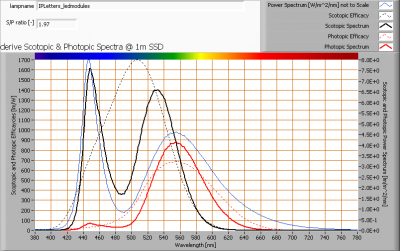
The power spectrum, sensitivity curves and resulting scotopic and photopic spectra (spectra energy content defined at 1 m distance).
The S/P ratio is 2.0.
More info on S/P ratio can be found on the OliNo website.
Chromaticity diagram
The chromaticity space and the position of the lamp’s color coordinates in it.
The light coming from this lamp is inside the area designated with class A. This class indicates an area that is defined for signal lamps, see also the OliNo website.
Its coordinates are x=0.3071 and y=0.3323.
Color Rendering Index (CRI) or also Ra
Herewith the image showing the CRI as well as how well different colors are represented (rendered). The higher the number, the better the resemblance with the color when a black body radiator would have been used (the sun, or an incandescent lamp). Practical information and also some critics about the CRI can be found on the OliNo website.
Each color has an index Rx, and the first 8 indexes (R1 .. R8) are averaged to compute the Ra which is equivalent to the CRI.
CRI of the light of this lightbulb.
The value of 63 is lower than 80 which is considered a minimum value for indoor usage.
Note: the chromaticity difference is 0.0046 indicates the distance to the Planckian Locus. There is no norm yet that states what the max deviation from white light is allowed to be. A reference with signal lights as a reference is given in the chromaticity diagram.
Voltage dependency
The dependency of a number of lamp parameters on the lamp voltage is determined. For this, the lamp voltage has been varied and its effect on the following light bulb parameters measured: illuminance E_v [lx], the lamppower P [W] and the luminous efficacy [Lm/W].
Lamp voltage dependencies of certain light bulb parameters, where the value at 12 V is taken as 100 %.
The illuminance and consumed power do not vary significantly when the voltage is varied.
When the voltage at 12 V varies with + and – 0.25 V, then the illuminance varies ≈ 3 %, so when abrupt voltage changes occur this effect is not visible in the illuminance output.
Warm up effects
After switch on of a cold lamp, the effect of heating up of the lamp is measured on illuminance E_v [lx], the lamppower P [W] and the luminous efficacy [lm/W].
Effect of warming up on different light bulb parameters. At top the 100 % level is put at the begining.
The warm up time is about 20 minutes, during which the illuminance and the power (separately measured) vary much less than 5 %.
Measure of flickering
An analysis is done on the measure of flickering of the light output by this light bulb. See the OliNo site for more information.
The measure of fast illuminance variartion of the light of the light bulb
| parameter | waarde | eenheid |
|---|---|---|
| Flicker frequency | n.a. | Hz |
| Illuminance modulation index | 0 | % |
The illuminance modulation index is computed as: (max_Ev – min_Ev) / (max_Ev + min_Ev).
Note: the modulation is so small that the flicker frequency is not relevant and even maybe not correct. Looking at the image it does not look like a stable frequency.
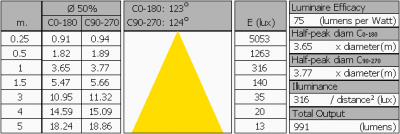
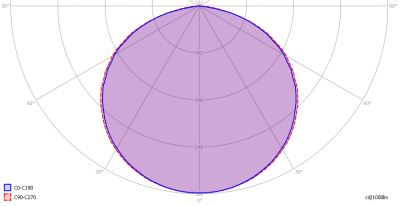
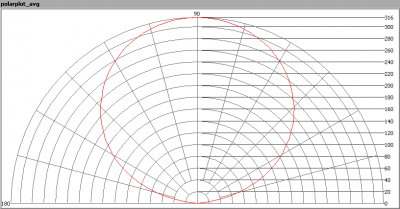
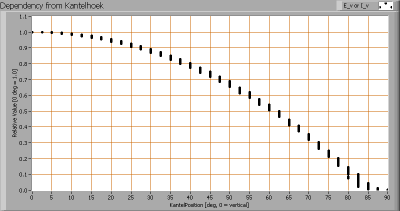
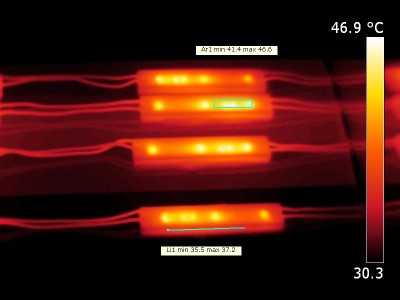
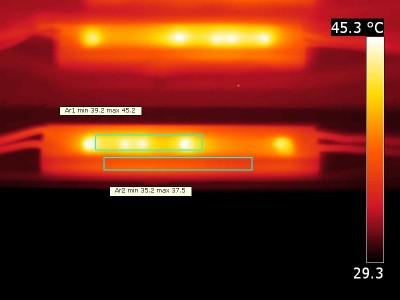
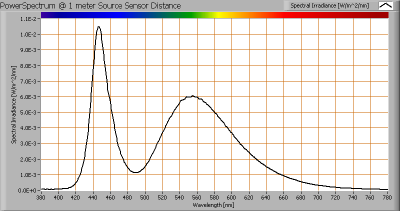
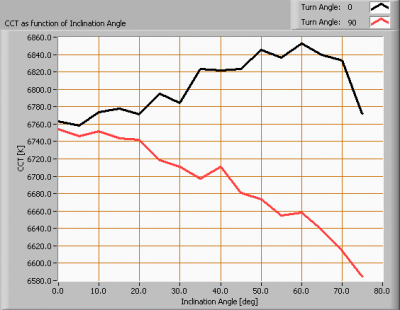
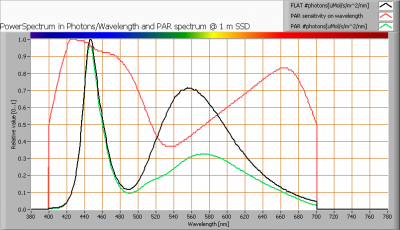
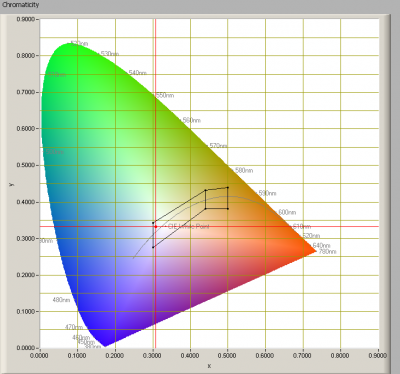
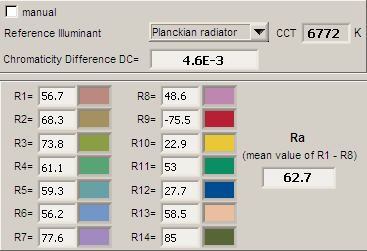
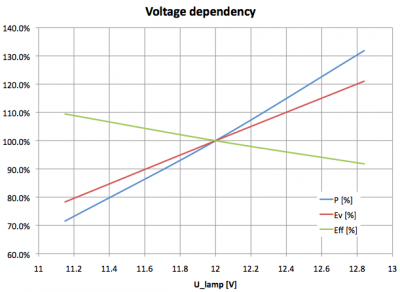
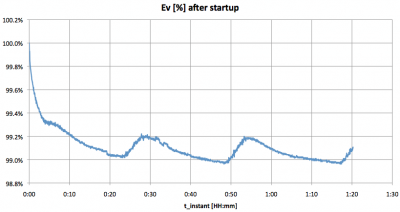
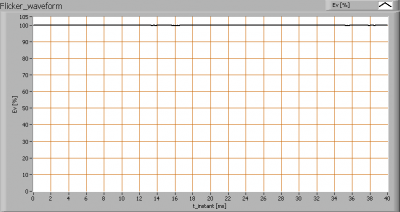
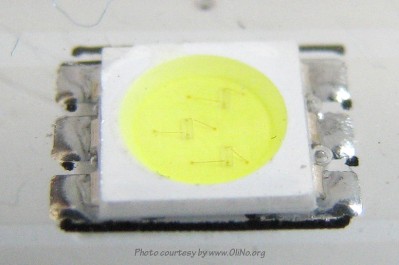



Most popular posts